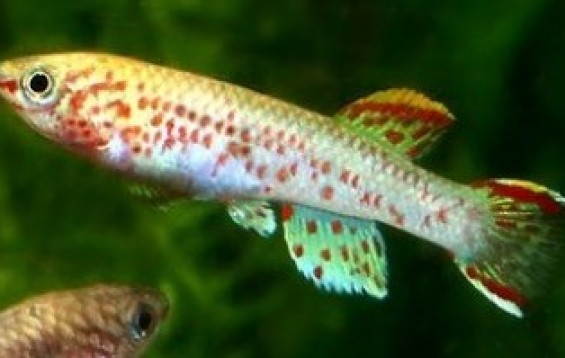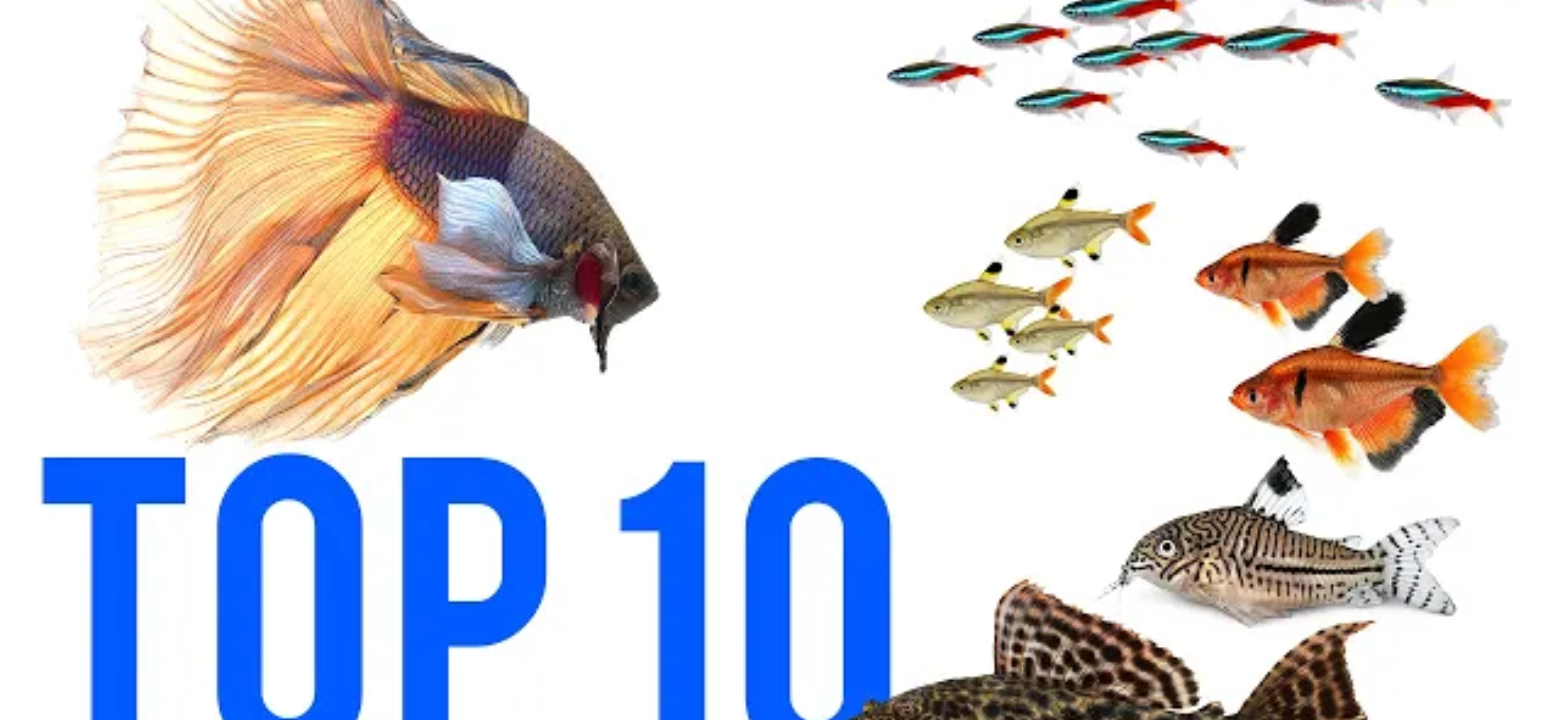- Name:
Gardneri Killifish
(View AKA's) - Family: Aplocheilidae
- Species: Killifish
- Scientific Name: Fundulopanchax gardneri


More Details
General info about Gardneri Killifish
The term Killy is derived from the Dutch word meaning ditch or channel, not because this fish is a killer in the aquarium. The males of this species are a vibrant blue/green with many red spots running the length of the body. The tips of the dorsal, anal and caudal fin are fringed in yellow. The females are less brightly colored with many small brown spots running the length of the body. The lyretail effect is created due to short extensions on the upper and lower rays of the tail, there are many different color varieties for these extensions. There are also many different color morphs of these fish in the wild, each stream has a different color pattern. Their normal size is under 2-1/2" long. Due to living in shallow environments that often dry, Garneri Killies evolved to be excellent jumpers which allows them to move from one small water body to another, hence, the aquarium should be tightly covered.
To keep these fish in captivity, water pH should be between 6.0 and 7.0 and water temperature should range from 71.6ºF to 77ºF. The tank should have many plants, rocks, lots of hiding places and a peat moss substrate. These fish should only be kept in a species only tank with 3 or 4 females and just one male, keeping more than one male will lead to harassment and may even lead to the death of one of them. While the Killifish is a rather peaceful fish they can become aggressive to other female Killifish as well as other fish when breeding, however, if a community tank is desired they can be kept with peaceful, unassuming and colorless fish.
Gardneri Killifish Diet & Nutrition
These fish are omnivorous. In the wild, they are predatory and mainly feed on small insects and bloodworms but can also eat algae and other plant material. In an aquarium, they can be fed with flakes, pellets and live food.
Determining Sex of Gardneri Killifish
Males are larger and more colorful than females.
Breeding & Spawning Gardneri Killifish
Due to the unpredictability of their natural habitats, these specie’s eggs have evolved to withstand a period of drying. Eggs take 14 to 21 days to hatch and the fry are free swimming immediately after hatching. The eggs should be removed to another tank since the adults may feed on them.
Gardneri Killifish Origin
This species is native to Cameroon and Nigeria. It inhabits water holes and shallow streams and marshes.
Acclimating Gardneri Killifish
The water in which these fish are packaged is different from the water in the tank, since these fish are extremely sensitive to water conditions the acclimation process is very important. This process should never be rushed. Aquarium lights should be off for at least the first 4 hours of the fish in the new tank and it should not be fed in the first 24h. There are two acclimation methods: Floating Method and the Drip Method.
Floating method - the aquarium lights should be off and lights in the room should be dim, the bag in which the fish is should be placed in the surface of the water to float for about 15 minutes, this allows the water in the bag to adjust to the water in the tank. The bag should then be cut under the knot and the top edge of the bag should be rolled down one inch, then ¼ cup of the aquarium water should be added to the bag, this step should be repeated every 4 minutes until the bag is full, then half the water of the bag should be discarded and the bag should be put to float again and ¼ cup of the aquarium water should be added to the bag every 4 minutes until the bag is full. Afterwards, the Discus can be moved into the aquarium.
Drip method – the aquarium lights should be off and lights in the room should be dim, the bag in which the fish is should be placed in the surface of the water to float for about 15 minutes, this allows the water in the bag to adjust to the water in the tank. The bag contents should be poured into a 1 gallon bucket that has never been cleaned with any chemicals, the fish should be enterally submerged. A siphon, using airline tubing, should be set up and a drip line should run from the main aquarium to the bucket. Several loose knots should be tied in the airline tubing to regulate flow. Sucking the end of the airline tube that goes to the bucket will begin a siphon, the flow should be regulated to 2 to 4 drips per second. Once the water in the buckets doubles, half should be discarded and the process should be repeated until it doubles again. Afterwards, the fish can be moved to the aquarium.
Relevent Articles
Original Detail
| Name | Species | Family | Scientific Name | More Detail | Added by |
|---|---|---|---|---|---|
| Gardneri Killifish | Killifish | Aplocheilidae | Fundulopanchax gardneri | The term Killy is derived from the Dutch word meaning ditch or channel, not because this fish is a killer in the aquarium. The males of this species are a vibrant blue/green with many red spots running the length of the body. The tips of the dorsal, anal and caudal fin are fringed in yellow. The females are less brightly colored with many small brown spots running the length of the body. The lyretail effect is created due to short extensions on the upper and lower rays of the tail, there are many different color varieties for these extensions. There are also many different color morphs of these fish in the wild, each stream has a different color pattern. Their normal size is under 2-1/2" long. Due to living in shallow environments that often dry, Garneri Killies evolved to be excellent jumpers which allows them to move from one small water body to another, hence, the aquarium should be tightly covered. To keep these fish in captivity, water pH should be between 6.0 and 7.0 and water temperature should range from 71.6ºF to 77ºF. The tank should have many plants, rocks, lots of hiding places and a peat moss substrate. These fish should only be kept in a species only tank with 3 or 4 females and just one male, keeping more than one male will lead to harassment and may even lead to the death of one of them. While the Killifish is a rather peaceful fish they can become aggressive to other female Killifish as well as other fish when breeding, however, if a community tank is desired they can be kept with peaceful, unassuming and colorless fish. | PalaciosAn |
Changed by users
| Submitted Date | Submitted By | Status | Action |
|---|



